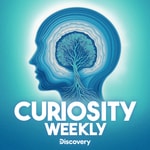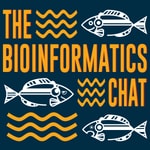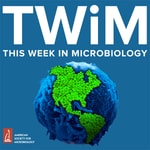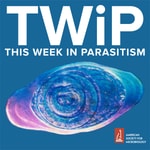Epigenetics Podcast – Details, episodes & analysis
Podcast details
Technical and general information from the podcast's RSS feed.
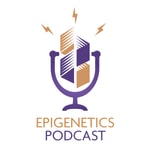
Epigenetics Podcast
Active Motif
Frequency: 1 episode/19d. Total Eps: 155

Recent rankings
Latest chart positions across Apple Podcasts and Spotify rankings.
Apple Podcasts
🇩🇪 Germany - lifeSciences
31/07/2025#43🇺🇸 USA - lifeSciences
31/07/2025#73🇩🇪 Germany - lifeSciences
30/07/2025#36🇩🇪 Germany - lifeSciences
29/07/2025#30🇺🇸 USA - lifeSciences
29/07/2025#78🇬🇧 Great Britain - lifeSciences
28/07/2025#97🇩🇪 Germany - lifeSciences
28/07/2025#20🇺🇸 USA - lifeSciences
28/07/2025#50🇬🇧 Great Britain - lifeSciences
27/07/2025#83🇩🇪 Germany - lifeSciences
27/07/2025#77
Spotify
No recent rankings available
Shared links between episodes and podcasts
Links found in episode descriptions and other podcasts that share them.
See all- https://twitter.com/epigenetics_pod
149 shares
- https://twitter.com/activemotif
145 shares
- https://twitter.com/chrstn_e
3 shares
RSS feed quality and score
Technical evaluation of the podcast's RSS feed quality and structure.
See allScore global : 52%
Publication history
Monthly episode publishing history over the past years.
Nucleosome Positioning in Cancer Diagnostics (Vladimir Teif)
Episode 133
jeudi 5 septembre 2024 • Duration 40:44
In this episode of the Epigenetics Podcast, we caught up with Vladimir Teif from the University of Essex to talk about his work on nucleosome positioning in development and disease.
Vladimir's research has been pivotal in understanding nucleosome positioning and its implications for cell differentiation, particularly in embryonic stem cells and cancer. We discuss his groundbreaking studies that first mapped nucleosome positions in various cell types and how these findings led to uncovering the intricate relationships between nucleosome stability, transcription factors, and DNA modifications such as methylation. This understanding has immense significance for cancer diagnostics, where knowing the spatial arrangement of nucleosomes could influence how aggressive a cancer type might be, or how a patient might respond to treatment.
Transitioning from foundational research to clinical applications, Vladimir elaborates on his exciting work with liquid biopsies. By analyzing cell-free DNA from blood plasma, researchers can infer the nucleosome positioning and, ultimately, the presence of cancer without the need for invasive tissue biopsies. We explore how this new approach holds potential for earlier detection of cancers and more effective patient stratification, demonstrating a profound shift in how we leverage epigenetic data in clinical settings.
References
-
Vladimir B. Teif, Karsten Rippe, Predicting nucleosome positions on the DNA: combining intrinsic sequence preferences and remodeler activities, Nucleic Acids Research, Volume 37, Issue 17, 1 September 2009, Pages 5641–5655, https://doi.org/10.1093/nar/gkp610
-
Teif, V., Vainshtein, Y., Caudron-Herger, M. et al. Genome-wide nucleosome positioning during embryonic stem cell development. Nat Struct Mol Biol 19, 1185–1192 (2012). https://doi.org/10.1038/nsmb.2419
-
Beshnova DA, Cherstvy AG, Vainshtein Y, Teif VB (2014) Regulation of the Nucleosome Repeat Length In Vivo by the DNA Sequence, Protein Concentrations and Long-Range Interactions. PLoS Comput Biol 10(7): e1003698. https://doi.org/10.1371/journal.pcbi.1003698
-
Shtumpf, M., Piroeva, K.V., Agrawal, S.P. et al. NucPosDB: a database of nucleosome positioning in vivo and nucleosomics of cell-free DNA. Chromosoma 131, 19–28 (2022). https://doi.org/10.1007/s00412-021-00766-9
Related Episodes
Contact
The Effect of Histone Demethylases on Gene Expression and Cancer Cell Stability (Johnathan Whetstine)
Episode 132
jeudi 29 août 2024 • Duration 39:37
In this episode of the Epigenetics Podcast, we talked with Johnathan Whetstine from Fox Chase Cancer Center about his work on how histone demethylases affect gene expression and cancer cell stability.
The Interview start by discussing a pivotal paper from Jonathan's lab in 2010, where they identified a role for the KDM4A histone demethylase in replication timing and cell cycle progression. They elaborate on the discoveries made regarding the link between histone marks, replication timing, and gene expression control. Jonathan explains the impact of microRNAs on regulating KDM4A and how protein turnover rates can influence cellular responses to treatments like mTOR inhibitors.
Further, they explore the causal relationship between histone marks and replication timing, demonstrating how alterations in epigenetic regulation can affect genome stability. Jonathan shares insights from his latest research on H3K9 methylation balance at the MLL-KM2A locus, elucidating how these epigenetic modifications regulate amplifications and rearrangements in cancer cells. The episode concludes with a discussion on the establishment of the Cancer Epigenetics Institute at Fox Chase Cancer Center, aiming to bridge academia and industry to accelerate translational research in cancer epigenetics.
References
-
Black, J. C., Allen, A., Van Rechem, C., Forbes, E., Longworth, M., Tschöp, K., Rinehart, C., Quiton, J., Walsh, R., Smallwood, A., Dyson, N. J., & Whetstine, J. R. (2010). Conserved antagonism between JMJD2A/KDM4A and HP1γ during cell cycle progression. Molecular cell, 40(5), 736–748. https://doi.org/10.1016/j.molcel.2010.11.008
-
Mishra, S., Van Rechem, C., Pal, S., Clarke, T. L., Chakraborty, D., Mahan, S. D., Black, J. C., Murphy, S. E., Lawrence, M. S., Daniels, D. L., & Whetstine, J. R. (2018). Cross-talk between Lysine-Modifying Enzymes Controls Site-Specific DNA Amplifications. Cell, 174(4), 803–817.e16. https://doi.org/10.1016/j.cell.2018.06.018
-
Van Rechem, C., Ji, F., Chakraborty, D., Black, J. C., Sadreyev, R. I., & Whetstine, J. R. (2021). Collective regulation of chromatin modifications predicts replication timing during cell cycle. Cell reports, 37(1), 109799. https://doi.org/10.1016/j.celrep.2021.109799
-
Gray, Z. H., Chakraborty, D., Duttweiler, R. R., Alekbaeva, G. D., Murphy, S. E., Chetal, K., Ji, F., Ferman, B. I., Honer, M. A., Wang, Z., Myers, C., Sun, R., Kaniskan, H. Ü., Toma, M. M., Bondarenko, E. A., Santoro, J. N., Miranda, C., Dillingham, M. E., Tang, R., Gozani, O., … Whetstine, J. R. (2023). Epigenetic balance ensures mechanistic control of MLL amplification and rearrangement. Cell, 186(21), 4528–4545.e18. https://doi.org/10.1016/j.cell.2023.09.009
Related Episodes
Contact
Comparing CUT&Tag to ENCODE ChIP-Seq in Alzheimer's Disease Samples (Sarah Marzi)
Episode 123
jeudi 18 avril 2024 • Duration 46:47
In this episode of the Epigenetics Podcast, we talked with Sarah Marzi from the UK Dementia Research Institute at Imperial College London about her work on epigenetic changes in Alzheimer's Disease, and comparing CUT&Tag to ENCODE ChIP-Seq using limited cell samples.
The interview discusses Sarah Marzi's work on ChIP-Seq experiments and their significance in understanding Alzheimer's disease from an epigenetic perspective. The discussion touches on the widespread dysregulation and changes in acetylation, particularly in genes associated with Alzheimer's risk, providing insights into potential links between epigenetic insults and disease onset.
Moving on to the technical aspects of the study, the interview examines the strategic use of CUT&Tag. It explores the challenges and optimizations involved in accurately profiling limited cell samples. The dialogue also compares CUT&Tag to ENCODE ChIP-Seq, highlighting the complexities of peak calling and data interpretation across different methodologies.
References
-
Kumsta, R., Marzi, S., Viana, J. et al. Severe psychosocial deprivation in early childhood is associated with increased DNA methylation across a region spanning the transcription start site of CYP2E1. Transl Psychiatry 6, e830 (2016). https://doi.org/10.1038/tp.2016.95
-
Marzi, S. J., Schilder, B. M., Nott, A., Frigerio, C. S., Willaime‐Morawek, S., Bucholc, M., Hanger, D. P., James, C., Lewis, P. A., Lourida, I., Noble, W., Rodriguez‐Algarra, F., Sharif, J., Tsalenchuk, M., Winchester, L. M., Yaman, Ü., Yao, Z., The Deep Dementia Phenotyping (DEMON) Network, Ranson, J. M., & Llewellyn, D. J. (2023). Artificial intelligence for neurodegenerative experimental models. Alzheimer’s & Dementia, 19(12), 5970–5987. https://doi.org/10.1002/alz.13479
-
Marzi, S. J., Leung, S. K., Ribarska, T., Hannon, E., Smith, A. R., Pishva, E., Poschmann, J., Moore, K., Troakes, C., Al-Sarraj, S., Beck, S., Newman, S., Lunnon, K., Schalkwyk, L. C., & Mill, J. (2018). A histone acetylome-wide association study of Alzheimer’s disease identifies disease-associated H3K27ac differences in the entorhinal cortex. Nature Neuroscience, 21(11), 1618–1627. https://doi.org/10.1038/s41593-018-0253-7
-
Hu, D., Abbasova, L., Schilder, B. M., Nott, A., Skene, N. G., & Marzi, S. J. (2022). CUT&Tag recovers up to half of ENCODE ChIP-seq peaks in modifications of H3K27 [Preprint]. Genomics. https://doi.org/10.1101/2022.03.30.486382
Related Episodes
-
Development of Integrative Machine Learning Tools for Neurodegenerative Diseases (Enrico Glaab)
-
DNA Methylation Alterations in Neurodegenerative Diseases (Paula Desplats)
Contact
The Role of Small RNAs in Transgenerational Inheritance in C. elegans (Oded Rechavi)
Episode 33
jeudi 22 octobre 2020 • Duration 43:58
In this episode of the Epigenetics Podcast, we caught up with Dr. Oded Rechavi, Professor at the University of Tel Aviv, to talk about his work on the role of small RNAs in transgenerational inheritance in C. elegans.
The most prominent example of transgenerational inheritance is the Dutch famine of 1944 during World War II. Effects of this famine could be observed in the grandchildren of people that lived through this hunger winter, but the molecular mechanisms involved remain largely unknown. The guest of this podcast episode, Dr. Rechavi, has taken on the challenge to unravel parts of this puzzle by studying transgenerational epigenetics in C. elegans.
It was already known that small RNA molecules could play a role in passing on information from one generation to the next, but it was not clear what exactly was being inherited. Was it RNAs? Or chromatin modifications? Or something else?
Dr. Rechavi made several important discoveries in his journey to answer these questions. He started out by showing that RNAi provides an antiviral protection mechanism in C. elegans that can be passed on over multiple generations. He then went on to show that starvation in one generation leads to changes in the lifespan of future generations, and investigate how long this memory could last. Simple dilution of the parental RNA in future generations could not be the answer because the inherited phenotypes lasted much longer than would be possible if this were the case. This led Dr. Rechavi to the discovery that small RNAs were amplified in each generation, and the effect of a stimulus could affect multiple generations. More recently, Dr. Rechavi and his team studied the interplay of neurons and the germ line and how information can be passed on from the brain to the germ line.
In this interview, we cover how Dr. Rechavi chose C. elegans as a model organism, discuss his first major discoveries in the field of transgenerational effects of starvation, and what role epigenetic factors play in this process.
References
- Oded Rechavi, Gregory Minevich, Oliver Hobert (2011) Transgenerational Inheritance of an Acquired Small RNA-Based Antiviral Response in C. elegans (Cell) DOI: 10.1016/j.cell.2011.10.042
- Oded Rechavi, Leah Houri-Ze’evi, … Oliver Hobert (2014) Starvation-induced transgenerational inheritance of small RNAs in C. elegans (Cell) DOI: 10.1016/j.cell.2014.06.020
- Leah Houri-Ze’evi, Yael Korem, … Oded Rechavi (2016) A Tunable Mechanism Determines the Duration of the Transgenerational Small RNA Inheritance in C. elegans (Cell) DOI: 10.1016/j.cell.2016.02.057
- Itamar Lev, Uri Seroussi, … Oded Rechavi (2017) MET-2-Dependent H3K9 Methylation Suppresses Transgenerational Small RNA Inheritance (Current biology: CB) DOI: 10.1016/j.cub.2017.03.008
- Leah Houri-Zeevi, Yael Korem Kohanim, … Oded Rechavi (2020) Three Rules Explain Transgenerational Small RNA Inheritance in C. elegans (Cell) DOI: 10.1016/j.cell.2020.07.022
Contact
- Active Motif on Twitter
- Epigenetics Podcast on Twitter
- Active Motif on Linked-In
- Active Motif on Facebook
- eMail: podcast@activemotif.com
Development of Site-Specific ChIP Technologies (Hodaka Fujii)
Episode 32
jeudi 1 octobre 2020 • Duration 42:06
In this episode of the Epigenetics Podcast, we caught up with Dr. Hodaka Fujii, Professor of Biochemistry and Genome Biology at Hirosaki University Graduate School of Medicine and School of Medicine, to talk about his work on the development of locus-specific ChIP technologies.
The goal of conventional chromatin immunoprecipitation (ChIP) assays is to find genomic locations of transcription factor binding or genome-wide profiles of histone tail modifications. In contrast to that, the guest of this episode, Dr. Fujii, has developed methods such as insertional chromatin immunoprecipitation (iChIP) and engineered DNA-binding molecule-mediated chromatin immunoprecipitation (enChIP) to identify the factors that are binding to specific sites on the genome.
In iChIP, LexA binding sites are inserted into the genomic region of interest. In parallel, the DNA-binding domain of LexA, fused with FLAG epitope tags and a nuclear localization signal, is expressed in the same cells. After crosslinking and chromatin preparation, the resulting chromatin is immunoprecipitated with an antibody against the tag. This allows proteins or RNA interacting with the region of interest to be analyzed with the appropriate downstream application. The enChIP takes a similar approach, but does not require insertion of the LexA binding sites. Instead, a FLAG-tagged dCas9 protein together with the respective guide RNA are used to target the region of the genome of interest. After the IP and the purification DNA, RNA, or proteins can be analyzed accordingly. The lack of the requirement of to insert the LexA binding sites into the genome makes enChIP much more straightforward than iChIP.
In this interview, we discuss the story behind how Dr. Fujii got into the field of epigenetics, how he developed iChIP, and how the method was improved over the years. Furthermore, we discuss the development of enChIP and how this can be used as an alternate method to Hi-C.
References
- Akemi Hoshino, Satoko Matsumura, … Hodaka Fujii (2004) Inducible Translocation Trap (Molecular Cell) DOI: 10.1016/j.molcel.2004.06.017
- Akemi Hoshino, Hodaka Fujii (2009) Insertional chromatin immunoprecipitation: a method for isolating specific genomic regions (Journal of Bioscience and Bioengineering) DOI: 10.1016/j.jbiosc.2009.05.005
- Toshitsugu Fujita, Hodaka Fujii (2013) Efficient isolation of specific genomic regions and identification of associated proteins by engineered DNA-binding molecule-mediated chromatin immunoprecipitation (enChIP) using CRISPR (Biochemical and Biophysical Research Communications) DOI: 10.1016/j.bbrc.2013.08.013
- Toshitsugu Fujita, Miyuki Yuno, … Hodaka Fujii (2015) Identification of Non-Coding RNAs Associated with Telomeres Using a Combination of enChIP and RNA Sequencing (PLOS ONE) DOI: 10.1371/journal.pone.0123387
- Toshitsugu Fujita, Miyuki Yuno, Hodaka Fujii (2016) Efficient sequence-specific isolation of DNA fragments and chromatin by in vitro enChIP technology using recombinant CRISPR ribonucleoproteins (Genes to Cells) DOI: 10.1111/gtc.12341
- Toshitsugu Fujita, Miyuki Yuno, … Hodaka Fujii (2017) Identification of physical interactions between genomic regions by enChIP-Seq (Genes to Cells) DOI: 10.1111/gtc.12492
- Toshitsugu Fujita, Fusako Kitaura, … Hodaka Fujii (2017) Locus-specific ChIP combined with NGS analysis reveals genomic regulatory regions that physically interact with the Pax5 promoter in a chicken B cell line (DNA Research) DOI: 10.1093/dnares/dsx023
Contact
- Active Motif on Twitter
- Epigenetics Podcast on Twitter
- Active Motif on Linked-In
- Active Motif on Facebook
- eMail: podcast@activemotif.com
Regulation of Chromatin Organization by Histone Chaperones (Geneviève Almouzni)
Episode 31
jeudi 17 septembre 2020 • Duration 38:43
In this episode of the Epigenetics Podcast, we caught up with Geneviève Almouzni, Ph.D., Research Director at the CNRS at Institut Curie in Paris, to talk about her work on the regulation of chromatin organization by histone chaperones.
Geneviève Almouzni got her Ph.D. from Université Pierre-et-Marie-Curie in 1988 under the supervision of Marcel Méchali. She then moved to the United States to work as a postdoc in the National Institutes of Health in the laboratory of Professor Alan Wolffe. In 1994, she returned to Paris and became a Junior Group Leader at Institut Curie and became a Group Leader there in 2000. In 2013, she took over the direction of research at the Institut Curie and became the third woman to hold this position, after Marie Curie and Irène Joliot-Curie.
Geneviève Almouzni’s research focuses on the assembly of chromatin and the identification of histone chaperones. Histone chaperones are necessary for the establishment and maintenance of chromatin, as they help to assemble the nucleosomes out of the core histones and DNA. This occurs both when the polymerase transcribes through a nucleosome and after DNA replication and repair.
The Almouzni group has identified and characterized multiple histone chaperones, including CAF-1, HirA, and HJURP. Furthermore, they investigated how post-translational modifications on soluble histones influence the final epigenetic state of the nucleosome and the reassembly of chromatin after DNA replication. In the last couple of years, the group has focused on the unraveling the link between the structure of chromatin at centromeres and cancer.
In this interview, we discuss the focus of the Almouzni lab on histone chaperones, how the lab was able to identify its first one with CAF-1, how histone PTMs on soluble histones influence the deposition on the DNA, and how the chromatin on centromeres is involved in cancer.
References
- Dominique Ray-Gallet, Jean-Pierre Quivy, … Geneviève Almouzni (2002) HIRA Is Critical for a Nucleosome Assembly Pathway Independent of DNA Synthesis (Molecular Cell) DOI: 10.1016/S1097-2765(02)00526-9
- Pierre-Henri L. Gaillard, Emmanuelle M.-D. Martini, … Geneviève Almouzni (1996) Chromatin Assembly Coupled to DNA Repair: A New Role for Chromatin Assembly Factor I (Cell) DOI: 10.1016/S0092-8674(00)80164-6
- Jean-Pierre Quivy, Danièle Roche, … Geneviève Almouzni (2004) A CAF-1 dependent pool of HP1 during heterochromatin duplication (The EMBO Journal) DOI: 10.1038/sj.emboj.7600362
Contact
- Active Motif on Twitter
- Epigenetics Podcast on Twitter
- Active Motif on Linked-In
- Active Motif on Facebook
- eMail: podcast@activemotif.com
How the "Fragile Nucleosome" Science Community Came to Life (Christine Cucinotta, Melvin Noe Gonzalez)
Episode 30
jeudi 10 septembre 2020 • Duration 41:20
In this episode of the Epigenetics Podcast, we caught up with Dr. Christine Cucinotta and Dr. Melvin Noe Gonzalez to talk about how they brought the #fragilenucleosome seminar series and Discord channel to life.
Christine Cucinotta and Melvin Noe Gonzales are part of the organizing committee of the independent scientific community "Fragile Nucleosome." This community consists of a Discord channel with more than 1,000 members, a biweekly seminar series, a mentoring program, and a journal club series. The Fragile Nucleosome is organized exclusively by early-career scientists, without external sponsors or under the roof of a single graduate program or university.
In this interview, Christine and Melvin share the story on how the Fragile Nucleosome community got started, what has happened so far, and what the future plans are for the #fragilenucleosome.
References
- #fragilenucleosome on Twitter
- Fragile Nucleosome Discord Channel
- Fragile Nucleosome on generegulation.org
- Christine Cucinotta on Twitter
- Melvin Noe Gonzalez on Twitter
Contact
- Active Motif on Twitter
- Epigenetics Podcast on Twitter
- Active Motif on Linked-In
- Active Motif on Facebook
- eMail: podcast@activemotif.com
Epigenetic Influence on Memory Formation and Inheritance (Isabelle Mansuy)
Episode 29
jeudi 3 septembre 2020 • Duration 38:50
In this episode of the Epigenetics Podcast, we caught up with Professor Isabelle Mansuy, Ph.D., from the University of Zürich and the ETH Zürich, to talk about her work on epigenetic influences on memory formation and inheritance.
Dr. Mansuy received her Ph.D. from the Friedrich Miescher Institute, Basel, Switzerland in 1994. After doing a postdoc at the Center for Neurobiology and Behavior at the Howard Hughes Medical Institute at the Columbia University in New York, she moved to Zürich and became Assistant Professor in Neurobiology at the Department of Biology at the Swiss Federal Institute of Technology in 1998. In 2004 Dr. Mansuy became Professor at the Brain Research Institute of the University Zurich, where, in 2007, she became Managing Director. Since 2013 she has been a full Professor in Neuroepigenetics at the University of Zürich and at the ETH in Zürich.
Dr. Isabelle Mansuy's work centers around the formation of memories and how those memories are inherited. She started to work on memory formation in the beginning of her research career, where she investigated the influence of calcineurin and Zif268 in this process. In the early 2010s she pivoted and transitioned to work on transgenerational epigenetic inheritance. To investigate this field of research she created an unbiased experiment that allowed her to study the transgenerational influence of early life stress, which she was able to observe for across up to 4 generations through the germline.
If you want to learn more about the challenges and obstacles that needed to be overcome to create this novel experimental approach to tackle the questions of and which epigenetic factors might influence transgenerational epigenetic inheritance, don't miss out on this episode.
References
- Karsten Baumgärtel, David Genoux, … Isabelle M. Mansuy (2008) Control of the establishment of aversive memory by calcineurin and Zif268 (Nature Neuroscience) DOI: 10.1038/nn.2113
- Tamara B. Franklin, Holger Russig, … Isabelle M. Mansuy (2010) Epigenetic Transmission of the Impact of Early Stress Across Generations (Biological Psychiatry) DOI: 10.1016/j.biopsych.2010.05.036
- Johannes Gräff, Bisrat T. Woldemichael, … Isabelle M. Mansuy (2012) Dynamic histone marks in the hippocampus and cortex facilitate memory consolidation (Nature Communications) DOI: 10.1038/ncomms1997
- Eloïse A. Kremer, Niharika Gaur, … Isabelle M. Mansuy (2018) Interplay between TETs and microRNAs in the adult brain for memory formation (Scientific Reports) DOI: 10.1038/s41598-018-19806-z
- Katharina Gapp, Ali Jawaid, … Isabelle M. Mansuy (2014) Implication of sperm RNAs in transgenerational inheritance of the effects of early trauma in mice (Nature Neuroscience) DOI: 10.1038/nn.3695
- Katharina Gapp, Saray Soldado-Magraner, … Isabelle M. Mansuy (2014) Early life stress in fathers improves behavioural flexibility in their offspring (Nature Communications) DOI: 10.1038/ncomms6466
Contact
- Active Motif on Twitter
- Epigenetics Podcast on Twitter
- Active Motif on Linked-In
- Active Motif on Facebook
- eMail: podcast@activemotif.com
Influence of Dynamic RNA Methylation on Gene Expression (Chuan He)
Episode 28
jeudi 20 août 2020 • Duration 41:22
In this episode of the Epigenetics Podcast, we caught up with Dr. Chuan He, John T. Wilson Distinguished Service Professor at University of Chicago, to talk about his work on the influence of dynamic RNA methylation on gene expression. RNA methylation is an important biological process, and cellular RNA methylation levels can have profound impacts on normal cellular differentiation and cancer cell proliferation.
Dr. He received his Ph.D. from MIT in 2000 and went on to do his postdoctoral work at Harvard University. He then became Assistant Professor at the University of Chicago in 2002, was promoted to Associate Professor in 2008, and in 2014 he became the John T. Wilson Distinguished Service Professor at the University of Chicago. From 2012 to 2017 he was Director of the Institute for Biophysical Dynamics at the University of Chicago.
Chuan He's current research focuses on understanding the reversible RNA modification m6A. This modification was discovered in the 1980s, but work from Dr. He's laboratory showing that m6A was indeed a transient epigenetic modification by the discovery of the first m6A demethylase FTO in 2011 rekindled the interest in this modification. In the following years Dr. He and his team identified and characterized additional m6A enzymes, including the m6A eraser ALKBH5, the m6A readers YTH and HNRNP, and the m6A writer complex METTL3/14.
METTL3/14 is a core complex in this regulatory network, and it requires an accessory factor WTAP, which mediates cellular m6A RNA methylation. The current work in the He lab focuses on how the methylation selectivity of this complex is achieved.
In this interview, we discuss the story of how the He lab discovered the members of the family of proteins that read, write, and erase RNA modifications and how those RNA modifications act in the field of epigenetics.
References
- Guifang Jia, Cai-Guang Yang, … Chuan He (2008) Oxidative demethylation of 3-methylthymine and 3-methyluracil in single-stranded DNA and RNA by mouse and human FTO (FEBS letters) DOI: 10.1016/j.febslet.2008.08.019
- Guifang Jia, Ye Fu, … Chuan He (2011) N6-methyladenosine in nuclear RNA is a major substrate of the obesity-associated FTO (Nature Chemical Biology) DOI: 10.1038/nchembio.687
- Guanqun Zheng, John Arne Dahl, … Chuan He (2013) ALKBH5 is a mammalian RNA demethylase that impacts RNA metabolism and mouse fertility (Molecular Cell) DOI: 10.1016/j.molcel.2012.10.015
- Jianzhao Liu, Yanan Yue, … Chuan He (2014) A METTL3-METTL14 complex mediates mammalian nuclear RNA N6-adenosine methylation (Nature Chemical Biology) DOI: 10.1038/nchembio.1432
Contact
- Active Motif on Twitter
- Epigenetics Podcast on Twitter
- Active Motif on Linked-In
- Active Motif on Facebook
- eMail: podcast@activemotif.com
How to Publish in Nature: Lessons from the ENCODE Consortium (Michelle Trenkmann, Senior Editor at Nature)
Episode 27
jeudi 6 août 2020 • Duration 35:08
In this episode of the Epigenetics Podcast, we caught up with Dr. Michelle Trenkmann, Senior Editor at Nature. We discussed her work as an editor at Nature and how she contributed to the ENCODE 3 publications, which are the results of the third phase of the ENCODE project. Dr. Trenkmann also talked about how to get your research published in Nature and what it’s like to review high profile scientific articles.
ENCODE References
Contact
- Active Motif on Twitter
- Epigenetics Podcast on Twitter
- Active Motif on Linked-In
- Active Motif on Facebook
- eMail: podcast@activemotif.com



